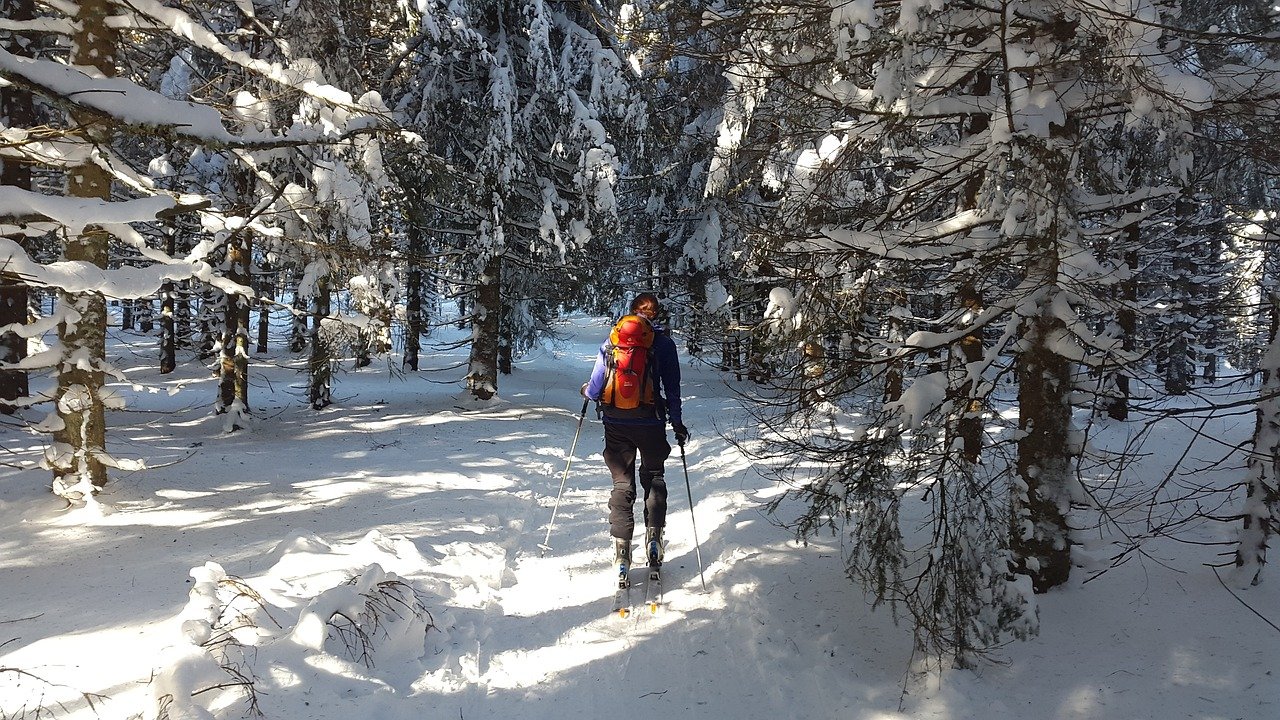Future of Recreation: The connection between outdoor gear manufacturing and infrastructure
Why B.C.’s outdoor manufacturing industry needs a vibrant outdoor sector
From access to nature to apps and AI, the evolution of trail construction to electric power, this story is part of a series of articles looking at how recreation will change and evolve over the short and long term.
The best marketing for Instinct Skis is not word of mouth – it’s crossing ski tracks.
“I sell most of my skis when I pop out of the woods and run into people,” says Al Eagleton, the owner and head ski maker for Rossland based Instinct.
When he’s not skiing, which he does almost every day of the winter, he makes powder and backcountry focused skis by hand in a workshop that’s a 10-minutes drive from Red Mountain Ski Resort and close to many backcountry ski zones.
“My testing ground is right here,” says Eagleton. “I can get something in my head, prototype it, immediately take to the hill and have 50 people testing it in a week. That’s huge.”
Like a lot of outdoor gear makers, Instinct is connected to place. Its backyard inspires the business, defines its products, provides a testing lab and a marketing platform. Many of Instinct’s customers have an emotional connection to Red, Rossland and the Kootenays and see owning one of Eagleton’s skis as a way of expressing that. Instinct is part of B.C.’s growing outdoor manufacturing economy. And as its ties to place show, it’s also part of a larger, more general, outdoor recreation economy that is built on the province’s wild places, protected spaces, wildlife, trails and resorts.
A webinar on October 16, hosted by the ORCBC, will explore this connection. How a thriving outdoor manufacturing industry depends on a thriving recreation ecosystem and what needs to happen to ensure they both continue to grow. Register for the webinar here.
There is a lot of money and jobs at stake. In Washington State outdoor recreation is responsible for $26-billion in annual expenditures and six percent of the state’s employees work in the sector. Albertans spend $2.3-billion on outdoor recreation trips every year and the industry employs six times as many people as the province’s forestry sector. There are no comparable estimates for B.C. However, a recent study by Patrick Lloyd-Smith, an economist at the University of Saskatchewan, found outdoor recreation provides $15-billion in economic benefits to British Columbians.
“It’s a massive deal in this province and bigger than a lot of people realize,” says Matt Mosteller, one of the webinar panellists and a board member of the Kootenay Outdoor Recreation Enterprise Initiative, an incubator for outdoor gear manufacturing in the Kootenays. “There is no outdoor recreation economy without a healthy environment.”
KORE’s 60 members, all outdoor gear manufacturers, tell Mosteller that the natural landscape is key to their business. Fishing gear manufacturers rely on healthy rivers and lakes. Mountain bike and hiking brands need world class trails. Snowsport creators bank on B.C.’s big mountains, legendary snow and leading ski reputation.
Arc’teryx, one of the province’s most valuable outdoor gear companies, leans heavily on its North Vancouver backyard for its design, testing and marketing, particularly connecting the Coast Range’s reputation for gnarly weather and its weatherproof gear. Invest Squamish, the town’s economic diversification arm, says its reputation as the outdoor recreation capital of Canada is responsible for its growing recreation technology sector, which includes 37 businesses employing 138 people.
Take OneUp Components, a mountain bike parts maker based in Squamish. Chris Heynan, one of its founders, says trail infrastructure and access to the riding community helped build the company.
“It was really important for us to be in a place that has access to trails right out our door,” he says.
The take away, says Mosteller, is that to support gear manufacturing governments need to support the greater outdoor industry and the wild spaces that make it possible. And to make that happen the outdoor sector needs to work together. To date, it has mostly operated in silos. A mountain bike club focuses on one trail network. Bear viewing businesses collaborate on protecting grizzly bears. To get the government's attention, and speak with a voice on par to its economic impact, all the parts of the outdoor economy have to work together, he says.
“We need a big umbrella,” says Mosteller. “We need to invite all the entities into the ecosystem, find the common ground and make it impossible for politicians to ignore us. That’s how we will get a seat at the table in deciding how the land is used.”
Ryan Stuart started writing about his adventures as a way to get paid to play. Twenty years later he’s still at it. Look for his name in magazines like Outside, Men’s Journal, Ski Canada, online at Hakai and The Narwhal. When he’s not typing at his home office in Vancouver Island’s Comox Valley, you can find him skiing, hiking, mountain biking, surfing, paddling or fishing somewhere nearby.

